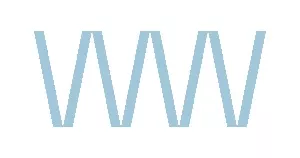Intellectual property is a significant asset for nearly all businesses so it is important that you consider how best to protect and, in some cases, commercialise it.
In this article we refer to intellectual property in its widest possible sense to include your brand, registered intellectual property, such as patents and trade marks, domain names, and general know-how, processes and methods that may be used in your business.
Registration
It is possible to formally register many different forms of intellectual property, including patents, trade marks and designs. Registration is administered by the Intellectual Property Office of New Zealand.
Registration is your best form of protection because it confirms your ownership rights in the intellectual property. If your intellectual property is used unlawfully by someone else it is easier to enforce your rights if it has been registered.
It is not possible to protect copyright by registration. Copyright protects many different original works, including drawings, artwork, books, computer programs, films and music. Protection occurs automatically when the work is created, published or performed. An author will often demonstrate to the public that they are the copyright owner by including a copyright indicator on the work, for example: © John Smith 2017.
Agreements with employees and contractors
If you engage employees and/or contractors to work in your business, you should ensure that their written agreements include provisions protecting your intellectual property.
Those agreements will usually record that any intellectual property created by the employee or contractor during the course of their engagement will be owned by the business and must not be used by the employee or contractor after their engagement ends. Intellectual property clauses go hand in hand with confidentiality clauses. This is important because you want to ensure that your intellectual property is not disclosed to your competitors if your employees or contractors start working for them.
Copyright is the only form of intellectual property developed by employees which is protected automatically. Under the Copyright Act 1994, where an employee makes, in the course of his or her employment a literary, dramatic, musical, or artistic work, that person's employer is the first owner of the copyright in the work.
Agreements with clients
Ownership of intellectual property can be a key consideration when providing certain services or products to clients.
Your terms of trade or any other form of agreement with your clients should make it clear who owns the intellectual property in the services or products you provide.
Ownership of designs produced for clients is a good example of why this is important. Under the Copyright Act 1994 where a client commissions and pays, or agrees to pay for, you to produce a design, the client is the first owner of the copyright in that work, unless there is an agreement to the contrary. A key point here is that the client simply has to agree to pay for the design services; payment does not actually have to take place before they will be considered the copyright owner.
This is why it is essential for businesses that provide design services to have agreements with their customers about ownership of intellectual property. Many agreements will provide that the business retains ownership of copyright in the design and either grants a licence to the client for them to use the design for specific purposes or transfers ownership of the copyright only once payment from the client has been received in full.
Licensing your intellectual property
You may wish to licence use of your intellectual property to third parties. This might occur, for example, where you wish to expand into overseas markets and so decide to license your intellectual property to licensees who already have a presence in that market.
The licence may allow the licensee to use your intellectual property to manufacture products and distribute or sell them.
You should have a written licence agreement with the licensee. That agreement should describe, amongst other things, the intellectual property being licensed, where it can be used (i.e. the territory) and for what, fees charged for the licence, who owns improvements in the intellectual property, and rights to terminate the licence.
How we can help
We can help with all of these issues – from registering your intellectual property to reviewing or drafting agreements with your employees, contractors, clients and licensees.
If you would like to find out what we can do to assist you in protecting or commercialising your intellectual property, please contact Charlene Sell.
Download article in PDF format
RELATED ARTICLES
The content of this article is intended to provide a general guide to the subject matter. Specialist advice should be sought about your specific circumstances.

